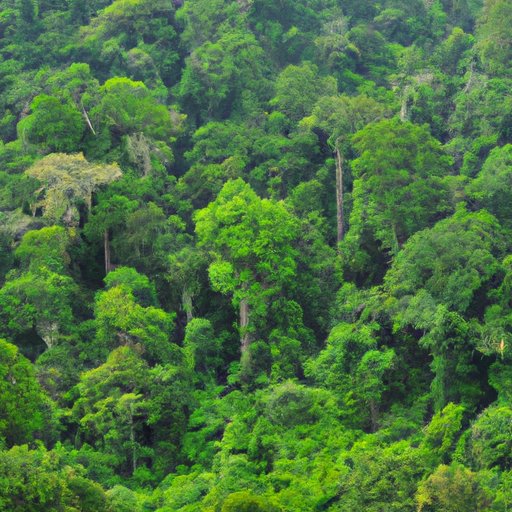Introduction
Rainforests are complex ecosystems that form an important part of the global environment. They are defined as regions with high levels of rainfall and a wide variety of plant and animal life. Rainforests are found in tropical and subtropical regions around the world, although they are most abundant in the Amazon Basin in South America.
In addition to their incredible biodiversity, rainforests are home to millions of people and are an important source of food, medicines, and other resources. Unfortunately, these vital ecosystems are being lost at an alarming rate due to human activity.
How Many Rainforests Are Left on Earth?
It is estimated that there are still about 2 billion acres (8 million km²) of rainforest left in the world today. This is a significant reduction from the original 10 billion acres (40 million km²) that existed before the start of extensive deforestation in the 20th century.
The remaining rainforests are located primarily in South America, Africa, and Southeast Asia. In South America, the Amazon Basin is the largest remaining rainforest area, covering almost 5 million square kilometers (1.9 million square miles). In Africa, the Congo Basin is the main remaining rainforest region, covering approximately 3.7 million square kilometers (1.4 million square miles). Finally, in Southeast Asia, the Indonesian archipelago is home to the largest remaining rainforest area, covering roughly 1.3 million square kilometers (500,000 square miles).
Exploring the Remaining Rainforest Regions
Each of the remaining rainforest regions is incredibly diverse and home to a range of unique species. For example, the Amazon Basin is home to over 40,000 plant species, 3,000 fish species, 1,294 bird species, 427 mammal species, 428 amphibian species, and 378 reptile species. Similarly, the Congo Basin contains an estimated 10,000 plant species, 700 bird species, 300 mammal species, 200 fish species, and 200 reptile species. The Indonesian archipelago is home to an estimated 15,000 plant species, 350 mammal species, 400 reptile species, and 800 bird species.
These regions are also home to millions of people who rely on the rainforest for food, medicine, and other resources. In addition, many of these areas have been designated as protected national parks or nature reserves in order to preserve their incredible biodiversity.
The Shrinking Rainforest: What’s Happening and What Can We Do?
Despite the efforts to protect the remaining rainforest areas, they are still under threat from human activities such as logging, mining, and agricultural expansion. These activities lead to deforestation, which destroys the habitats of countless species and reduces the availability of important natural resources.
Fortunately, there are a number of solutions we can employ to help protect the remaining rainforest areas. These include better enforcement of existing laws, increased funding for conservation efforts, and public education campaigns to raise awareness about the importance of rainforests.
In addition, organizations like the Rainforest Alliance are working to promote sustainable development practices that are less damaging to the environment. These include promoting sustainable agriculture, protecting water sources, and reducing the use of toxic chemicals.
Conclusion
Rainforests are an essential part of the global environment and provide numerous benefits to humans and other species alike. Unfortunately, they are disappearing at an alarming rate due to human activities. However, there are a number of solutions we can employ to help protect the remaining rainforests, including better enforcement of laws, increased funding for conservation efforts, and public education campaigns.
We must all take action to ensure that we protect these vital ecosystems for future generations. Only then will we be able to fully appreciate the beauty and diversity of our planet’s rainforests.


